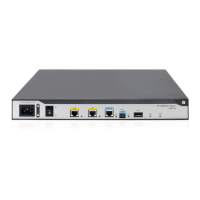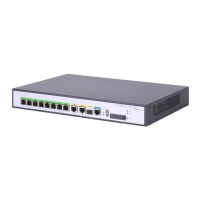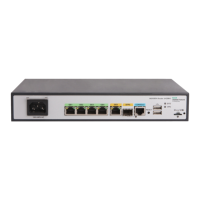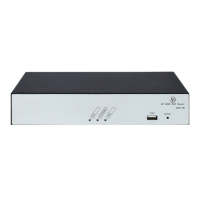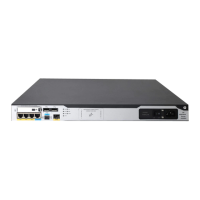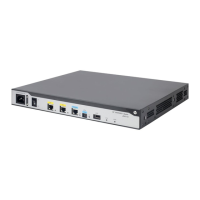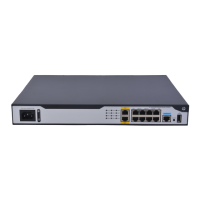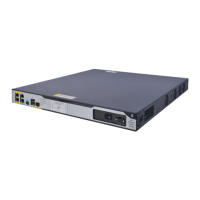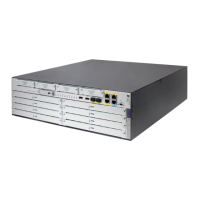249
Ste
Command
Remarks
2. Create an MFR interface
and enter MFR interface
view.
interface mfr { interface-number |
interface-number.subnumber
[ p2mp | p2p ] }
By default, no MFR interface or
subinterface exists.
Before creating an MFR subinterface,
make sure the main MFR interface
already exists.
3. (Optional.) Set a
description for the MFR
interface.
description text
By default, the description of an MFR
interface is interface name Interface, for
example, MFR4 Interface.
4. (Optional.) Set the MFR
bundle identifier.
mfr bundle-name name
The default bundle identifier is MFR +
frame relay bundle number, for
example, MFR4.
You cannot set a bundle identifier in the
MFR number format.
5. (Optional.) Enable MFR
fragmentation.
mfr fragment enable
By default, MFR fragmentation is
disabled.
6. (Optional.) Set the size
of the MFR sliding
window.
mfr window-size number
By default, the size of the MFR sliding
window is the number of physical
interfaces bundled by MFR.
7. (Optional.) Set
maximum fragment size
allowed for bundle links.
mfr fragment size size The default setting is 300 bytes.
8. (Optional.) Set the
expected bandwidth for
the MFR interface.
bandwidth bandwidth-value
By default, the expected bandwidth (in
kbps) is the interface baud rate divided
by 1000.
9. (Optional.) Restore the
default settings for the
MFR interface
default N/A
10. Shut down and then
bring up the MFR
interface.
• shutdown
• undo shutdown
By default, an MFR interface is up.
12. (Optional.) Configure
other parameters for the
MFR interface.
See "Configuring Frame Relay."
The fr interface
-
type and fr inarp
commands can be used only on main
MFR interfaces.
Configuring an MFR bundle link
Ste
Command
Remarks
1. Enter system view.
system-view N/A
2. Enter synchronous serial
interface view or POS
interface view.
interface interface-type
interface-number
N/A
3. Enable MFR encapsulation
on the interface.
link-protocol mfr
By default, synchronous serial interfaces
and POS interfaces use PPP
encapsulation.
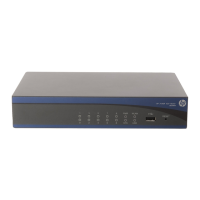
